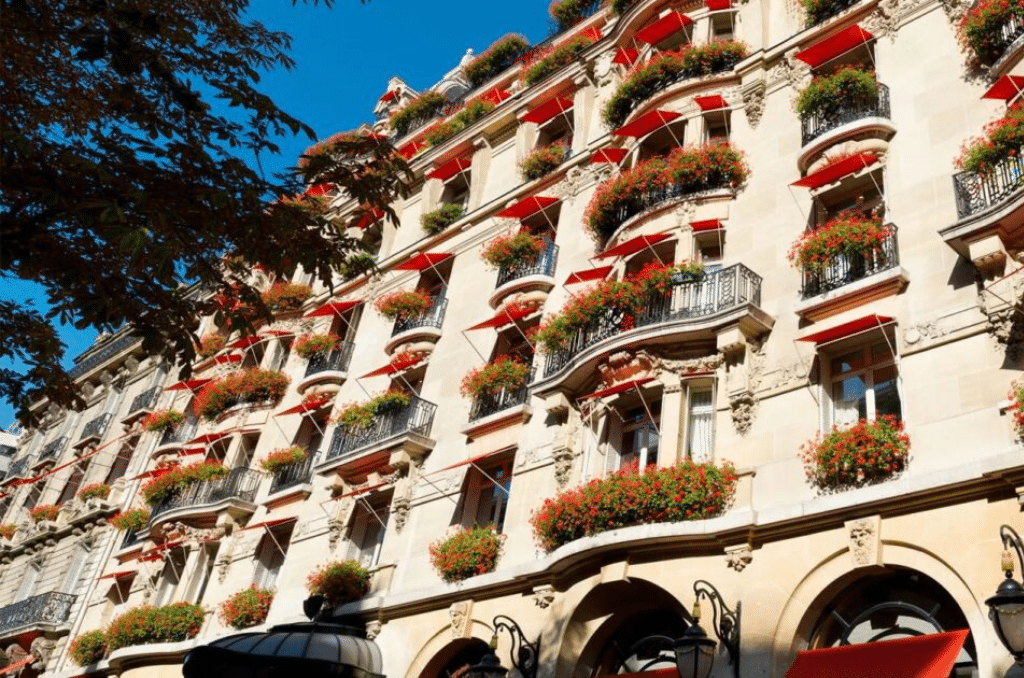On April 20, 1913, the emblematic Parisian palace on Avenue Montaigne opened its doors. To celebrate 110 years of opening, know-how, excellence, and fashion, the Plaza Athénée offers its guests an anniversary under the sign of music and elegance, all enhanced by its geranium red.
The hotel, one of the first Parisian establishments to be certified as a palace, is preparing festivities worthy of the event.
The Plaza in Gala dress
The entire hotel, including its restaurants, will be offering a warm musical atmosphere.

A guitarist-singer duo, installed in the lobby, performs in the gallery. In the Relais Plaza restaurant, a pianist enthusiastically enlivens the evening. And the melodious sounds of a cellist accompanied by a flutist resonate in the gastronomic restaurant Jean Imbert at the Plaza Athénée.
In addition to this musical entertainment, the hotel is dressed in festive ephemeral scenography. A paper work of art is displayed in the lobby. It is composed of dozens of handmade elements, requiring over a hundred hours of work.
Finally, the hotel’s signature flamboyant red color is used to decorate its lounges, while the famous geraniums begin their annual outing, hanging from its balconies, which are borrowed from art deco.
An elegant who doesn’t look her age
“Once upon a time, the Palace of Tomorrow”: its signature perfectly captures the colorful history of this Parisian institution in the City of Light. This exceptional longevity is explained by its ability to constantly renew itself without denying its heritage.

It all began in 1911 when the current building was constructed at 25 Avenue Montaigne.
The Plaza Athénée, the work of renowned architect Charles Lefebvre, opened its doors on April 20, 1913. At the time, the establishment had sixteen rooms per floor as well as an apartment on the top floor. It was only a few days before the opening of another reference of Parisian festivities: the Champs Elysées theater. Because of its proximity, the establishment quickly became the favorite place for composers and music and theater lovers.
With its success, the hotel doubled in size during the Roaring Twenties. Several large apartments and salons were added, again designed by the architect Charles Lefebvre.
The Galerie des Gobelin and the Relais Plaza restaurant became the scene of mythical evenings where Josephine Baker, Rudolph Valentino, and Maurice Chevalier gathered. But it was the actress Marlene Dietrich who left her mark on the muffled atmosphere of the place. In 1933, she stayed there for three weeks and occupied no less than seven rooms.
In 1936, the hotel acquired a chic brasserie, the Relais Plaza, an exact copy of the layout of the restaurant on the liner Le Normandie.
Click here to read the full article on Luxus Plus Magazine.
Featured photo : © Dorchester Collection – Comité Colbert








